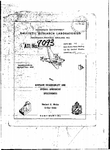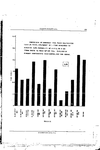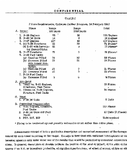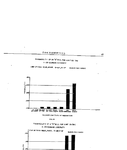Navigation
Install the app
How to install the app on iOS
Follow along with the video below to see how to install our site as a web app on your home screen.
Note: This feature may not be available in some browsers.
More options
You are using an out of date browser. It may not display this or other websites correctly.
You should upgrade or use an alternative browser.
You should upgrade or use an alternative browser.
What was the air to air weapon, or combination of weapons, used in WWII?
- Thread starter CobberKane
- Start date
Ad: This forum contains affiliate links to products on Amazon and eBay. More information in Terms and rules
More options
Who Replied?I'd have to give the edge to the 2 x MG131 + 1 x Mk108 cannon. Devastating firepower in a compact package.
View: https://www.youtube.com/watch?v=ZoLLDi-M3fk
Now imagine 6 x MK 108 in the nose of a Me 262 A-1a/U5.
View: https://www.youtube.com/watch?v=ZoLLDi-M3fk
Now imagine 6 x MK 108 in the nose of a Me 262 A-1a/U5.
From Page 18
C Supplementary Tests
Several tests now in progress and' also to be-conducted in the near .future are designed
to supplement information obtained from firings against aircraft. Such tests are concerned with the actual
mechanics of fuel tank ignition and include ignition of fuel tanks by fragments. One such test, recently
completed, involved the detonation of a 20mm high explosive incendiary round in the middle of a fully loaded
B-17 main fuel tank. The lack of fire served to verify and emphasize the importance of ignition of-the vaporized
fuel at the surface of the tank.
Page 19
The last two columns in Table E2 list the average "A" and "B" assessments given to
fires obtained in previously damaged cells. In each case the assessments pertain to the corresponding type
of aircraft. It is clear that the relative frequency of fuel fires and leakage is.not sufficient as a description
of fuel tank vulnerability. The severity of fires and-the location of fuel tanks are important to the overall
vulnerability of the fuel system. In general,, it appears that the higher the probability of causing a fire,
the higher the severity of fires when they do occur. The Cal. 0.50 ammunition caused no single-shot fires
which had any chance of causing the plane to crash within five minutes. Among the small calibers, only the
Cal. 0.60 displayed the ability to cause any appreciable single-shot "A" damage through fires. This may be -
due to the relatively high striking velocity for this caliber, resulting in more two-wall penetrations of fuel
cells. The 20mm rounds resulted in fires causing good "B" damage but not enough for high "A". It is expected
that this caliber will show up much better in firings against the lower surface of the wing. The higher
blast effect from the 20mm rounds results in larger holes on entry into the top of the fuel cell, but no damage
to the lower part of cell in contrast to the effect of the Cal. 0.60. The resulting fires then are relatively
weak, not being fed by a stream of fuel. Often they are blown out.by the slip stream of air provided by the
slave engine. In firings from the front and below, it is expected that fires caused by the 20mm rounds will
prove-much more damaging.
The 20mm INC is incendiary M96.
C Supplementary Tests
Several tests now in progress and' also to be-conducted in the near .future are designed
to supplement information obtained from firings against aircraft. Such tests are concerned with the actual
mechanics of fuel tank ignition and include ignition of fuel tanks by fragments. One such test, recently
completed, involved the detonation of a 20mm high explosive incendiary round in the middle of a fully loaded
B-17 main fuel tank. The lack of fire served to verify and emphasize the importance of ignition of-the vaporized
fuel at the surface of the tank.
Page 19
The last two columns in Table E2 list the average "A" and "B" assessments given to
fires obtained in previously damaged cells. In each case the assessments pertain to the corresponding type
of aircraft. It is clear that the relative frequency of fuel fires and leakage is.not sufficient as a description
of fuel tank vulnerability. The severity of fires and-the location of fuel tanks are important to the overall
vulnerability of the fuel system. In general,, it appears that the higher the probability of causing a fire,
the higher the severity of fires when they do occur. The Cal. 0.50 ammunition caused no single-shot fires
which had any chance of causing the plane to crash within five minutes. Among the small calibers, only the
Cal. 0.60 displayed the ability to cause any appreciable single-shot "A" damage through fires. This may be -
due to the relatively high striking velocity for this caliber, resulting in more two-wall penetrations of fuel
cells. The 20mm rounds resulted in fires causing good "B" damage but not enough for high "A". It is expected
that this caliber will show up much better in firings against the lower surface of the wing. The higher
blast effect from the 20mm rounds results in larger holes on entry into the top of the fuel cell, but no damage
to the lower part of cell in contrast to the effect of the Cal. 0.60. The resulting fires then are relatively
weak, not being fed by a stream of fuel. Often they are blown out.by the slip stream of air provided by the
slave engine. In firings from the front and below, it is expected that fires caused by the 20mm rounds will
prove-much more damaging.
The 20mm INC is incendiary M96.
Some files.
Note had a duplicate. Added the single round Pk to the multi-round time to Kill. Due to distributions it means one cannot simply multiply individual round hit Pk to scale up to get Pk for a plane from a fighter weapon setup, its more complex.
View attachment 233277View attachment 233278View attachment 233279View attachment 233280
Note had a duplicate. Added the single round Pk to the multi-round time to Kill. Due to distributions it means one cannot simply multiply individual round hit Pk to scale up to get Pk for a plane from a fighter weapon setup, its more complex.
View attachment 233277View attachment 233278View attachment 233279View attachment 233280
Attachments
Last edited:
Users who are viewing this thread
Total: 1 (members: 0, guests: 1)




